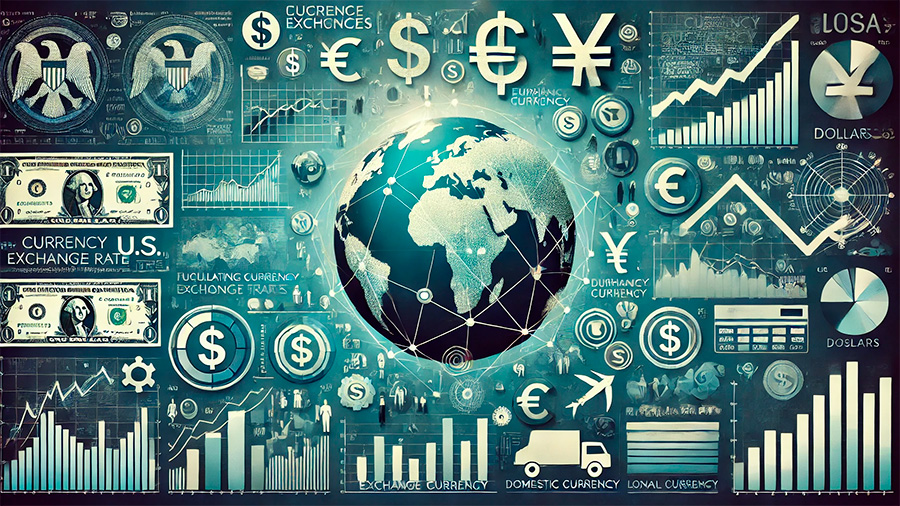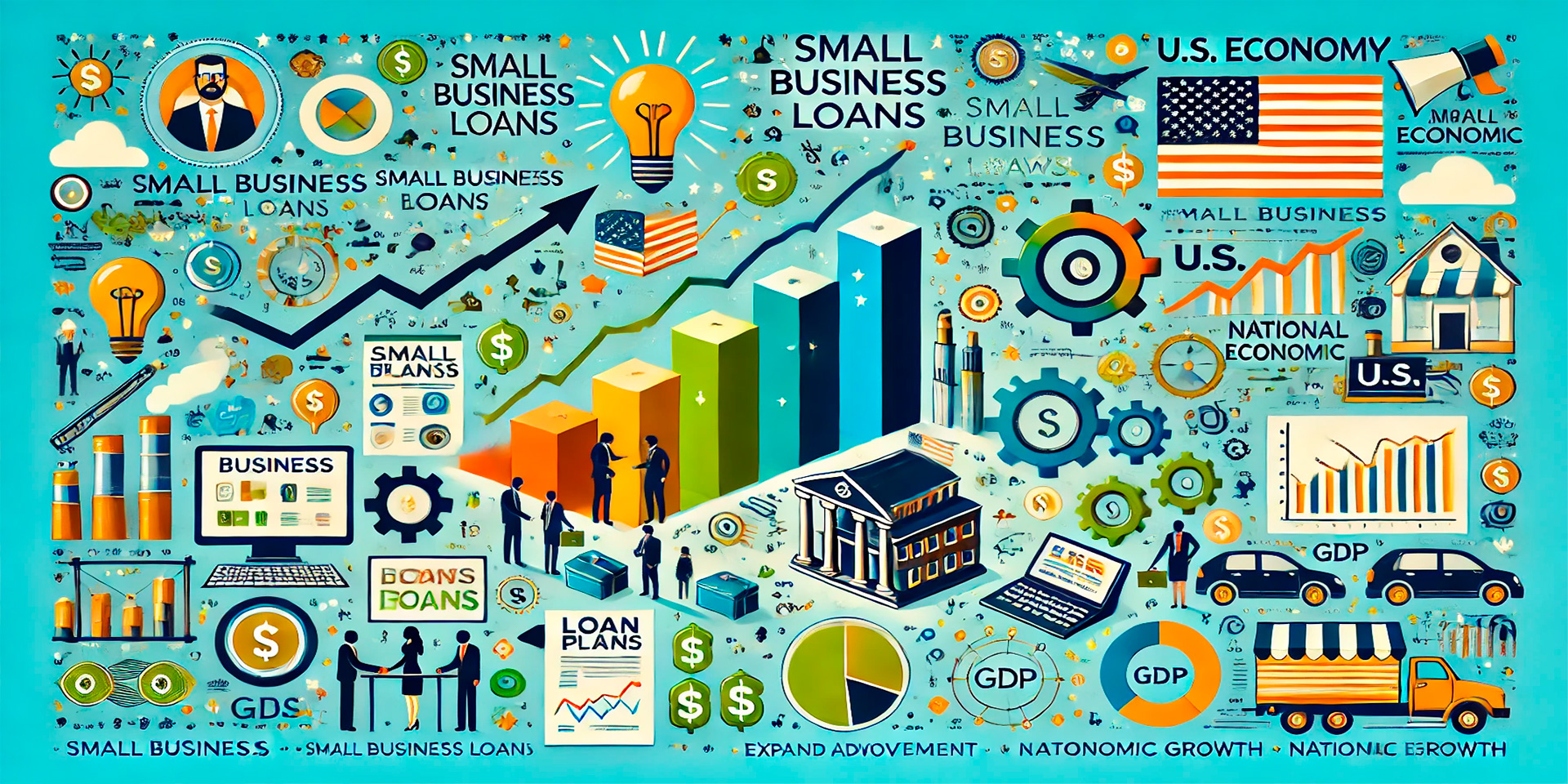
Navigating Global Economic Trends in U.S. Business Loans
Global economic shifts have a direct impact on U.S. businesses seeking loans, influencing everything from interest rates to loan availability. While many companies focus on domestic economic conditions when planning their borrowing strategies, international events and trends can also play a crucial role in shaping the lending environment. From global trade policies to geopolitical instability, these factors can alter the financial landscape, affecting the terms and accessibility of business loans in the U.S.
Understanding how global economic shifts affect borrowing can help businesses plan more effectively and make informed financial decisions. Whether it’s fluctuating exchange rates, changes in international trade agreements, or the ripple effects of economic downturns in other countries, U.S. businesses must stay attuned to global trends to secure the financing they need for growth and stability.
Interest Rate Fluctuations Driven by Global Trends
One of the most immediate ways global economic shifts influence U.S. business loans is through changes in interest rates. Central banks around the world, including the Federal Reserve in the U.S., adjust interest rates in response to global economic conditions such as inflation, recession risks, or trade imbalances. These rate changes directly affect the cost of borrowing for businesses, determining how much they will pay in interest on loans.
For example, if inflation rises globally, central banks may raise interest rates to prevent economies from overheating. This makes loans more expensive for U.S. businesses, potentially limiting their ability to borrow for expansion or operational needs. Conversely, during periods of global economic slowdown, central banks may lower interest rates to encourage borrowing and stimulate economic activity, creating more favorable conditions for businesses seeking loans.
Understanding these fluctuations is critical for U.S. businesses planning to borrow, as global economic events can lead to unexpected changes in loan costs. Staying informed about global interest rate trends allows businesses to time their borrowing strategically, ensuring they secure loans when rates are most favorable.

The Impact of Global Trade and Tariffs
Global trade policies and tariffs also play a significant role in shaping the business loan market in the U.S. Trade agreements, tariffs, and other international economic policies can affect industries that rely heavily on imports or exports, influencing their financial stability and, by extension, their ability to secure loans.
For example, if a new tariff is imposed on imported goods that a business relies on, it may face higher operational costs, which can strain its cash flow and make it more difficult to meet loan repayments. Lenders, in turn, may view businesses in affected industries as higher-risk borrowers, leading to stricter lending criteria or higher interest rates for loans.
Similarly, changes in global trade agreements can open new markets for U.S. businesses or close off existing ones, impacting their revenue streams and their need for financing. Businesses that are aware of these global trade dynamics can better anticipate their borrowing needs and position themselves to access credit under favorable terms.
Geopolitical Instability and Its Effect on Loan Markets
Geopolitical instability—such as conflicts, political upheaval, or economic sanctions—can create significant volatility in global financial markets. This uncertainty often leads to tighter lending standards, as banks and financial institutions become more cautious about extending credit during unpredictable times. For U.S. businesses seeking loans, geopolitical risks can result in higher interest rates, more stringent loan terms, or reduced access to credit altogether.
For instance, a U.S. business that operates in or trades with regions experiencing political instability may face additional scrutiny from lenders concerned about the risks involved. Even businesses not directly affected by geopolitical events can experience the ripple effects, as global financial instability can lead to tightening credit markets and increased borrowing costs.
By staying informed about global political developments, U.S. businesses can better assess the risks to their borrowing plans and seek out alternative financing options if traditional loans become harder to secure.

The Role of Currency Exchange Rates in Borrowing
Currency exchange rates, influenced by global economic trends, also impact U.S. businesses seeking loans, particularly those involved in international trade. Fluctuations in exchange rates can affect both the cost of borrowing and a company’s ability to repay loans, especially if the loan is in a foreign currency or the business earns revenue from overseas markets.
For example, if a U.S. business takes out a loan in euros but generates revenue in U.S. dollars, a shift in exchange rates that strengthens the dollar against the euro could make the loan more expensive to repay. Conversely, favorable exchange rate movements could reduce the cost of borrowing. Exchange rate volatility can therefore introduce additional financial risk, making it important for businesses to consider currency fluctuations when planning their borrowing strategies.
To mitigate the risks associated with exchange rate fluctuations, businesses can use hedging strategies or consider loans in their domestic currency to avoid exposure to exchange rate risk. Being aware of global currency trends allows businesses to make smarter decisions about borrowing in an international context.
Global Supply Chain Disruptions and Loan Repayment
The interconnected nature of the global economy means that supply chain disruptions in one part of the world can have far-reaching effects on businesses in the U.S. Events such as natural disasters, trade embargoes, or logistical bottlenecks can lead to delays in the supply of goods and raw materials, which in turn can affect a business’s ability to meet customer demand, generate revenue, and service its loans.
For businesses that rely on global supply chains, these disruptions can create cash flow challenges that make it difficult to meet loan repayment obligations. Lenders, aware of these risks, may tighten loan terms for businesses in sectors that are particularly vulnerable to global supply chain disruptions, such as manufacturing, retail, or technology.
Businesses can protect themselves by diversifying their supply chains, building cash reserves, and working closely with lenders to negotiate flexible loan terms that account for potential disruptions. By preparing for the impact of global supply chain issues, businesses can avoid falling behind on loan repayments and maintain their financial health.
How to Navigate Global Economic Shifts When Seeking Loans
Navigating the complex relationship between global economic shifts and U.S. business loan markets requires strategic planning and financial foresight. To mitigate the impact of global economic events on borrowing, businesses should stay informed about international economic trends and regularly assess how these shifts might influence their access to credit.
One way to navigate global economic uncertainty is to build strong relationships with lenders. Businesses that maintain open lines of communication with their financial institutions are more likely to secure flexible loan terms or negotiate favorable repayment plans if global economic conditions take a turn for the worse. Developing a strong credit profile and demonstrating consistent financial performance can also help businesses secure loans even when global economic conditions are less favorable.
Additionally, businesses should consider diversifying their sources of financing to reduce dependence on any single lender or loan type. By exploring alternative funding options such as government-backed loans, trade financing, or private equity, businesses can ensure they have access to the capital they need, regardless of global economic fluctuations.
Conclusion
Global economic shifts have a profound impact on the U.S. business loan market, influencing interest rates, loan availability, and borrowing costs. From international trade policies to geopolitical events, these global factors can create both opportunities and challenges for businesses seeking loans. By understanding how global economic trends affect borrowing and preparing accordingly, U.S. businesses can make informed financial decisions and secure the financing they need to grow and thrive.
You May Also Like

The Economic Impact of Small Business Loans on U.S. Growth
April 26, 2024
